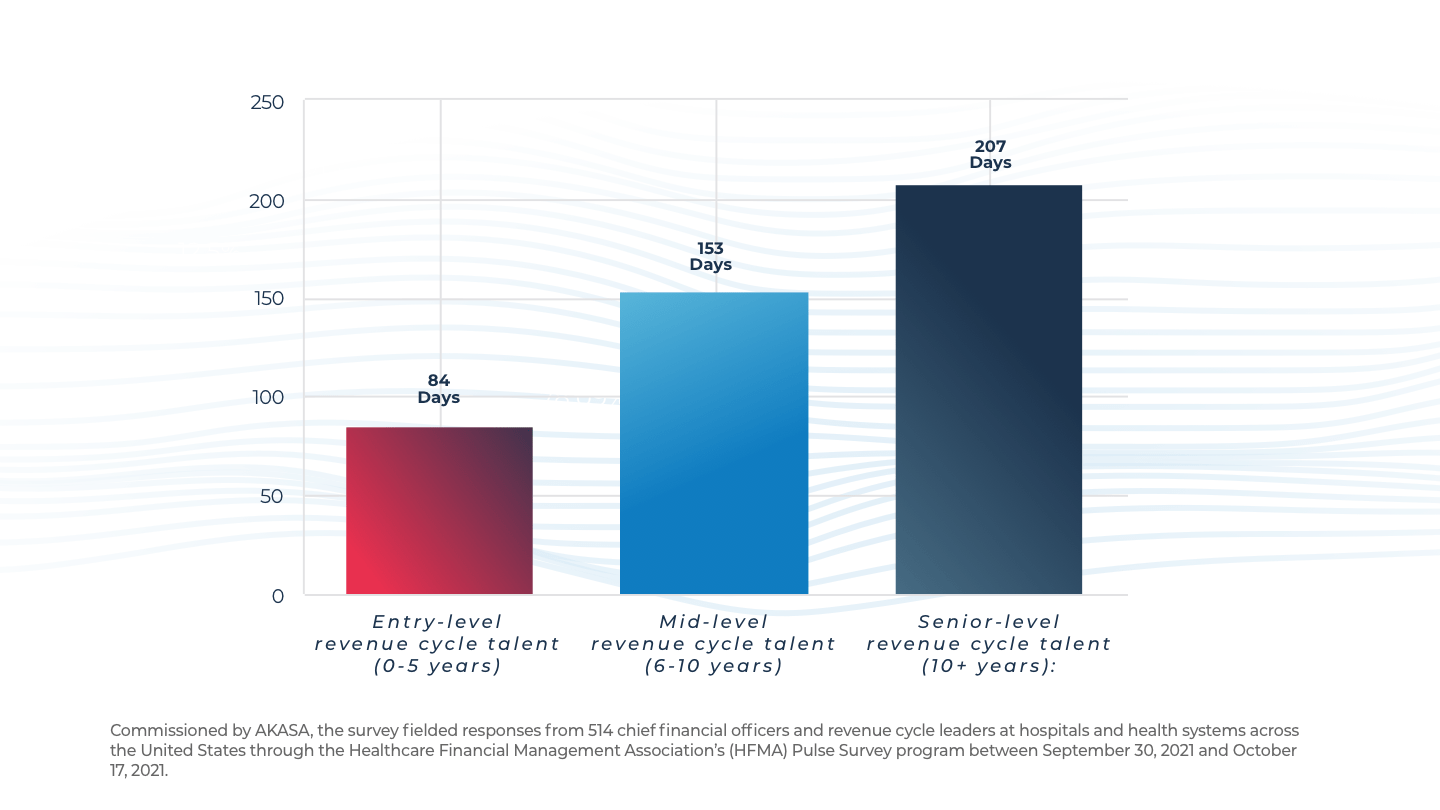
What You Should Know:
– AKASA, a developer of AI for healthcare operations, today released findings from a new survey highlighting the challenges hospitals and health systems are facing within the revenue cycle as the Great Resignation drives higher staff turnover, and skilled workers leave healthcare for higher-paying jobs in other industries like retail or logistics
– Commissioned by AKASA, the survey fielded responses from 514 chief financial officers and revenue cycle leaders at hospitals and health systems across the United States through the Healthcare Financial Management Association’s (HFMA) Pulse Survey program between September 30, 2021, and October 17, 2021. The national survey was designed to assess the adoption of automation in revenue cycle operations at hospitals and health systems across the U.S.
Key Findings
The survey of healthcare financial leaders found the cost of recruitment is significant and timelines to fill open roles are long, especially for senior-level revenue cycle roles:
– Entry-level revenue cycle talent (0-5 years): On average, costs $2,167 for recruitment and takes 84 days to fill vacant roles.
– Mid-level revenue cycle talent (6-10 years): On average, costs $3,581 for recruitment and takes 153 days to fill vacant roles.
– Senior-level revenue cycle talent (10+ years): On average, costs $5,699 for recruitment and takes 207 days to fill vacant roles.
Of note, the complete cost to recruit is likely higher as healthcare leaders often don’t have a full line of sight into the total cost of recruitment managed by marketing and HR as well as the costs associated with training and onboarding new staff.
COVID-19 Impact on Revenue Cycle Teams
COVID has a double-whammy effect on revenue cycle teams as staff availability is limited by illness, isolation requirements, and vaccine mandates, while COVID also drives volatility in claims and work volumes for these same teams making it especially challenging for health systems and hospitals to adequately staff their revenue cycle operations.
Healthcare employees are leaving their jobs for other reasons beyond the Great Resignation. In the wake of the Federal Vaccine Mandate, 12% of healthcare workers say they’ll retire early or leave for jobs not covered by the mandate. Coupled with the 18% of healthcare workers that have already left their jobs in the past year, turnover within the healthcare workforce is acute.
Longer hours, increased pressure to be more productive, and a sense of providing a decent patient financial experience in this environment are significantly challenging for teams. This combination increases the likelihood of morale issues and burnout while preventing teams from adapting quickly in the face of a rapidly shifting work environment. To counteract this, hospitals and health systems are examining how AI-powered automation can help them effectively manage claim volumes amid staffing challenges while elevating their workforce to tackle more complex, patient-facing assignments.
“Implementing automation doesn’t have to be difficult or involve hundreds of combined hours of work,” said Amy Raymond, head of revenue cycle operations at AKASA. “And it doesn’t have to result in reallocating staff to babysit the automation. A well-implemented, effective automation tool will handle the majority of cases within a workflow or area and grow to handle larger tasks, with minimal continued involvement from your team. At the end of the day, automation should not only reduce your costs, but it should also improve the accuracy of the work completed and improve performance against your key performance indicators.”

